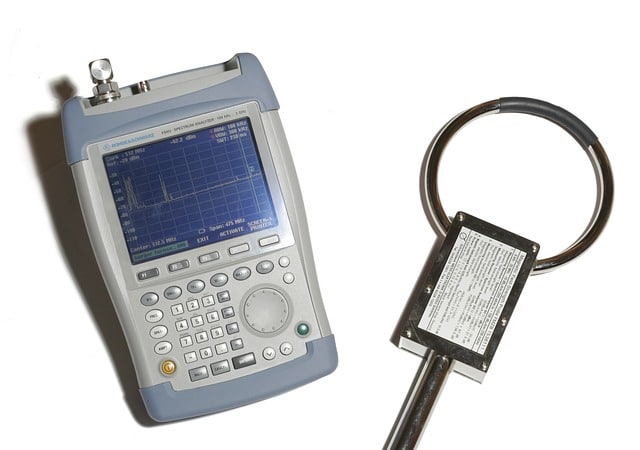Implementing a CMMS promises substantial ROI by streamlining maintenance processes, enhancing equipment reliability, and reducing downtime. Imagine a factory where machines operate seamlessly, breakdowns are minimized, and maintenance schedules are optimized—all thanks to a well-implemented CMMS. This efficiency not only cuts operational costs but also boosts overall productivity, translating directly into improved financial outcomes.
One of the primary contributors to ROI through CMMS is its ability to extend the lifespan of critical assets. By scheduling preventive maintenance tasks based on real-time data, CMMS prevents unexpected failures that could lead to costly repairs or replacements. This proactive approach ensures that equipment operates at peak performance, avoiding costly downtime and disruptions in production.
Moreover, CMMS empowers maintenance teams with comprehensive data analytics. By tracking key performance indicators (KPIs) such as Mean Time Between Failures (MTBF) and Mean Time to Repair (MTTR), businesses gain invaluable insights into operational efficiency. These insights enable informed decision-making, optimizing resource allocation and budget planning for maintenance activities.
In essence, investing in a robust CMMS isn’t just about adopting new technology—it’s about investing in the longevity and efficiency of your operations. It’s akin to having a well-oiled machine that not only runs smoothly but also anticipates and prevents potential breakdowns. This proactive management approach not only enhances operational efficiency but also ensures that every dollar invested in maintenance yields significant returns.
As industries evolve, so do the demands on maintenance strategies. CMMS isn’t just a tool; it’s a strategic investment that ensures businesses stay competitive in a rapidly changing marketplace. By analyzing the Return on Investment offered by CMMS, businesses can make informed decisions that propel them towards greater efficiency, profitability, and sustainability.
Unveiling Efficiency: How CMMS Boosts ROI in Maintenance Operations
Imagine this: your maintenance team seamlessly coordinating tasks, equipment inspections, and repairs, all from a centralized digital platform. CMMS makes this a reality by streamlining workflows and automating routine processes. It’s like having a virtual assistant dedicated to optimizing your maintenance schedule and resources.
One of the standout features of CMMS is its ability to schedule preventive maintenance. Instead of waiting for equipment breakdowns—which can be costly and disruptive—CMMS allows you to proactively service machinery based on usage data and manufacturer recommendations. This proactive approach not only extends the lifespan of equipment but also minimizes unexpected downtime, keeping operations running smoothly.
Moreover, CMMS enables detailed asset management. Every piece of equipment, from complex machinery to simple tools, can be cataloged with information on maintenance history, warranties, and current status. This comprehensive oversight helps in making informed decisions about repairs, replacements, and resource allocation.
For businesses aiming to optimize their maintenance budgets, CMMS provides invaluable insights. By tracking expenses related to maintenance activities and comparing them against productivity gains, managers can accurately assess the ROI of their maintenance strategies. This data-driven approach empowers organizations to make strategic adjustments that maximize efficiency and profitability.
Furthermore, CMMS isn’t just about numbers; it’s about empowering your maintenance team to work smarter. With real-time access to work orders, inventory levels, and equipment manuals, technicians can respond swiftly to issues, reducing resolution times and improving overall operational efficiency.
Implementing a CMMS is more than adopting new software—it’s a strategic investment in your organization’s future. By harnessing the power of technology to streamline maintenance operations, businesses can achieve significant cost savings, minimize downtime, and ultimately enhance their bottom line. Ready to unlock the full potential of your maintenance department? Explore how CMMS can transform your operations today.
Decoding Success: The Impact of CMMS on Financial Returns in Maintenance

Imagine your business operations are a well-oiled machine. Each part, from machinery to facilities, operates smoothly, minimizing downtime and maximizing productivity. This seamless operation is what a CMMS aims to achieve. By centralizing maintenance processes, CMMS streamlines workflows, schedules preventive maintenance, and tracks asset performance.
The impact of CMMS on financial returns is profound. Firstly, it reduces downtime significantly. With scheduled maintenance and real-time alerts on equipment failures, CMMS helps prevent costly breakdowns that can halt production. Every hour of downtime saved translates directly into saved revenue and increased output.
Secondly, CMMS enhances asset lifespan. By keeping equipment in optimal condition through regular maintenance, businesses extend the lifespan of their assets. This means fewer replacements and lower capital expenditures, which directly improves the bottom line.

Moreover, CMMS improves labor productivity. Maintenance teams can prioritize tasks efficiently with CMMS, ensuring they spend less time on reactive maintenance and more on proactive measures. This boosts overall efficiency and allows employees to focus on value-added activities.
Furthermore, the data insights provided by CMMS are invaluable. Business leaders can analyze maintenance trends, identify areas for improvement, and make data-driven decisions. This strategic advantage not only optimizes operations but also positions the business for long-term success in a competitive market.
From Cost Center to Profit Center: CMMS Strategies for Maximizing ROI
One of the primary strategies involves leveraging data-driven insights. CMMS platforms are rich with data regarding equipment performance, maintenance schedules, and downtime trends. By analyzing this data comprehensively, organizations can identify areas for optimization and cost savings. For instance, predictive maintenance algorithms can help predict equipment failures before they occur, thereby reducing unexpected downtime and repair costs.
Moreover, integrating CMMS with other business systems such as Enterprise Resource Planning (ERP) or Customer Relationship Management (CRM) systems can streamline operations further. This integration allows for seamless data flow across departments, improving overall efficiency and decision-making processes. For example, linking maintenance data with production schedules can help in planning maintenance activities during downtime periods, minimizing disruptions to operations.
Additionally, investing in employee training and engagement is crucial. Ensuring that staff are well-trained in using the CMMS effectively can lead to better utilization of the system’s features and functionalities. When employees are actively engaged in the maintenance process and understand the impact of their actions on overall profitability, they are more likely to contribute positively to the organization’s bottom line.
Furthermore, continuous improvement is key to maximizing ROI from CMMS investments. Regularly reviewing and optimizing maintenance workflows, updating system configurations based on evolving business needs, and staying abreast of technological advancements in CMMS software are essential practices. These efforts ensure that the CMMS remains aligned with organizational goals and continues to deliver measurable financial benefits over time.
Transforming a CMMS from a cost center to a profit center requires a strategic approach focused on leveraging data insights, integrating systems, investing in training, and fostering a culture of continuous improvement. By adopting these strategies, organizations can enhance operational efficiency, reduce costs, and ultimately achieve a higher ROI from their CMMS investments.
Dollars and Data: Calculating the True ROI of CMMS in Maintenance
At its core, CMMS is not just a software tool; it’s a strategic investment that pays dividends in operational savings and enhanced productivity. By centralizing maintenance activities, from scheduling preventive maintenance to managing work orders, CMMS empowers teams to work smarter, not harder. This means fewer breakdowns, reduced emergency repairs, and ultimately, lower maintenance costs.
But how do you quantify these benefits in terms of ROI? It starts with harnessing data-driven insights. CMMS collects a wealth of data on equipment performance, maintenance histories, and resource utilization. This data isn’t just numbers—it’s actionable intelligence that allows you to pinpoint inefficiencies, identify trends, and make informed decisions.
Picture this: You’re able to predict when a critical piece of machinery might fail based on historical data, allowing proactive maintenance to prevent costly breakdowns. This predictive capability alone can save thousands in unplanned downtime and emergency repairs, not to mention the ripple effect on production schedules and customer satisfaction.
Moreover, CMMS streamlines workflows by automating routine tasks and optimizing resource allocation. Think of it as having a dedicated assistant that ensures every maintenance dollar is spent wisely, maximizing the lifespan of assets and minimizing unnecessary expenditures.
Beyond Maintenance: How CMMS Transforms Businesses Through ROI
In the realm of modern business operations, the role of CMMS (Computerized Maintenance Management System) extends far beyond its traditional function of managing maintenance tasks. Beyond mere upkeep of equipment and facilities, CMMS has evolved into a strategic tool that transforms businesses through substantial Return on Investment (ROI).
One of the primary ways CMMS enhances ROI is by optimizing maintenance processes. By automating scheduling, tracking maintenance activities, and managing inventory, CMMS reduces downtime and improves operational efficiency. This proactive approach not only minimizes unexpected breakdowns but also extends the lifespan of critical assets, thereby reducing replacement costs.
Moreover, CMMS facilitates data-driven decision-making. Through comprehensive reporting and analytics, businesses gain valuable insights into equipment performance, maintenance trends, and resource utilization. This visibility allows for informed decisions on resource allocation and budget planning, optimizing both operational and capital expenditures.
Beyond operational efficiencies, CMMS contributes to improved compliance and risk management. By ensuring adherence to regulatory standards and implementing preventive maintenance measures, businesses mitigate risks associated with non-compliance and operational disruptions. This proactive stance not only protects business continuity but also enhances reputation and customer trust.
Furthermore, CMMS fosters a culture of accountability and transparency within organizations. With streamlined communication and task management features, teams collaborate more effectively, ensuring timely resolution of maintenance issues and reducing response times. This cohesive approach enhances overall productivity and employee satisfaction, driving positive outcomes across the organization.
In essence, CMMS transcends its role as a maintenance tool to become a catalyst for organizational transformation. By optimizing processes, fostering data-driven decisions, ensuring compliance, and enhancing collaboration, CMMS empowers businesses to achieve significant ROI while positioning themselves for sustained growth and competitiveness in today’s dynamic market landscape.
Frequently Asked Questions
What are the typical challenges in calculating ROI for CMMS?
Understanding ROI for Computerized Maintenance Management Systems (CMMS) can be challenging due to factors like accurately quantifying cost savings, measuring intangible benefits such as improved asset reliability, and ensuring data accuracy for calculations.
How can a CMMS system improve efficiency and reduce costs?
Discover how implementing a CMMS system enhances operational efficiency by streamlining maintenance processes, minimizing downtime, and optimizing asset management. Learn how it reduces costs through predictive maintenance, better resource allocation, and extended equipment lifespan.
What are the key metrics used to measure ROI with CMMS implementation?
Discover the essential metrics for measuring ROI when implementing a Computerized Maintenance Management System (CMMS). Learn how to assess cost savings, downtime reduction, labor efficiency gains, and overall asset performance improvements.
How do you justify the investment in CMMS to stakeholders?
Learn how to effectively justify the investment in CMMS (Computerized Maintenance Management System) to stakeholders. Discover strategies to communicate ROI, improved operational efficiency, reduced downtime, and enhanced asset management capabilities.
What is CMMS and how does it impact ROI in maintenance operations?
Discover how CMMS (Computerized Maintenance Management System) enhances ROI in maintenance operations by optimizing asset management, streamlining workflows, and minimizing downtime through proactive maintenance scheduling and cost-effective resource allocation.